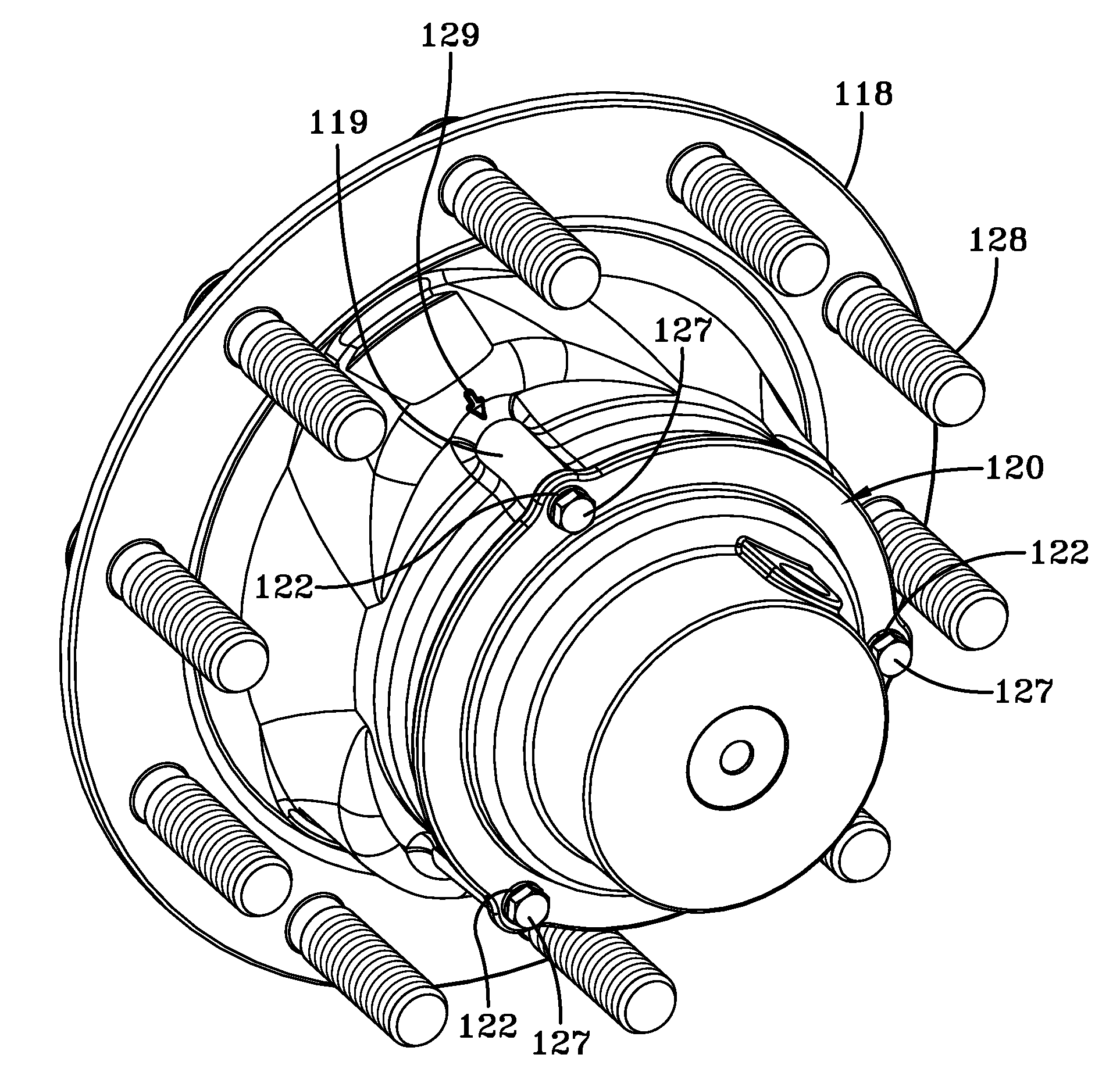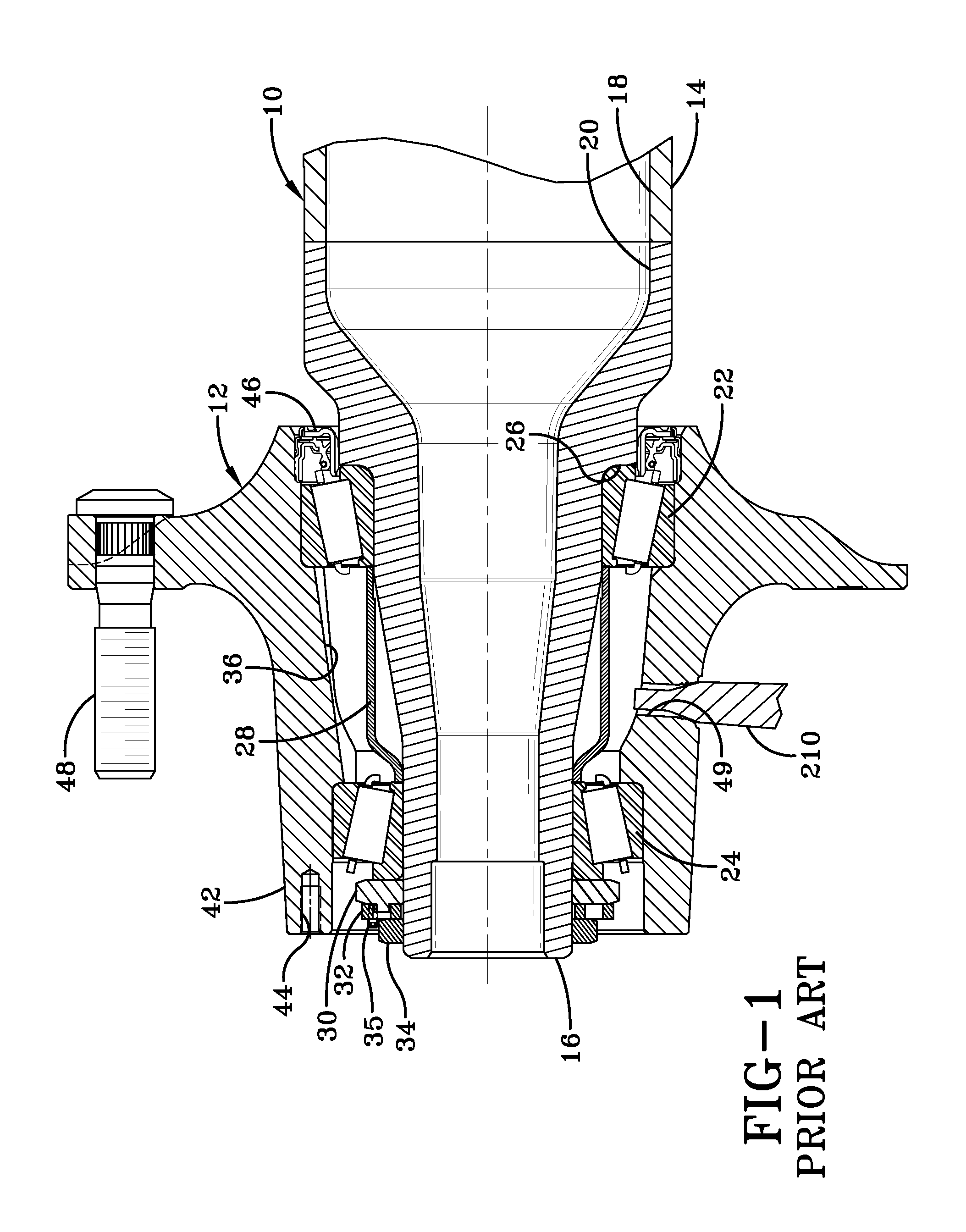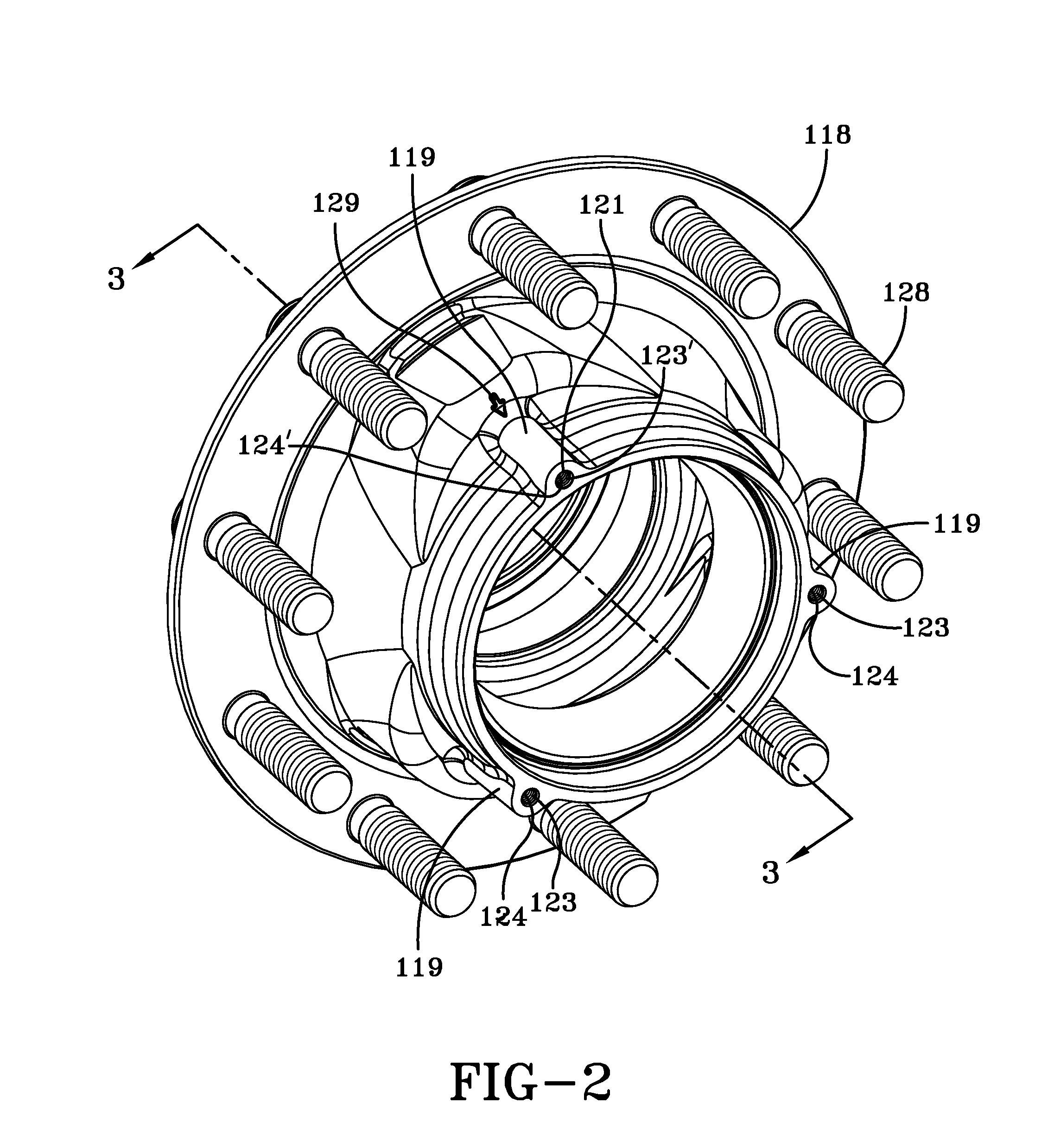Wheel hub with lubricant fill port
a technology of lubricant and fill port, which is applied in the direction of machine/engine, rigid support of bearing units, transportation and packaging, etc., can solve the problems of oil leakage out of the assembly, not being the optimum lubricant for achieving the goal of increasing the life of bearing assemblies, and affecting the performance of bearings, etc., to achieve the effect of simple manner and economical manufacturing
- Summary
- Abstract
- Description
- Claims
- Application Information
AI Technical Summary
Benefits of technology
Problems solved by technology
Method used
Image
Examples
Embodiment Construction
[0026]In order to better understand the wheel hub of the present invention, a prior art wheel hub is shown incorporated into an axle spindle and wheel end assembly for a heavy-duty vehicle in FIG. 1 and now will be described. Non-drive axle 10 depends from and extends transversely across the trailer of a heavy-duty tractor-trailer (not shown). A typical heavy-duty tractor-trailer includes one or more non-drive axles 10 suspended from the trailer, with each of the axles having a wheel end assembly 12 mounted on each end of the axle. For the sake of clarity, only one axle end and wheel end assembly 12 will be described herein. Axle 10 includes a central tube 14, and an axle spindle 16 is integrally connected by any suitable means, such as welding, to each end of the central tube. Axle central tube 14 generally is tubular-shaped and is formed with an internal cavity 18. Axle spindle 16 is tapered and is formed with a correspondingly tapered internal cavity 20.
[0027]Wheel end assembly 1...
PUM
 Login to View More
Login to View More Abstract
Description
Claims
Application Information
 Login to View More
Login to View More - R&D
- Intellectual Property
- Life Sciences
- Materials
- Tech Scout
- Unparalleled Data Quality
- Higher Quality Content
- 60% Fewer Hallucinations
Browse by: Latest US Patents, China's latest patents, Technical Efficacy Thesaurus, Application Domain, Technology Topic, Popular Technical Reports.
© 2025 PatSnap. All rights reserved.Legal|Privacy policy|Modern Slavery Act Transparency Statement|Sitemap|About US| Contact US: help@patsnap.com



